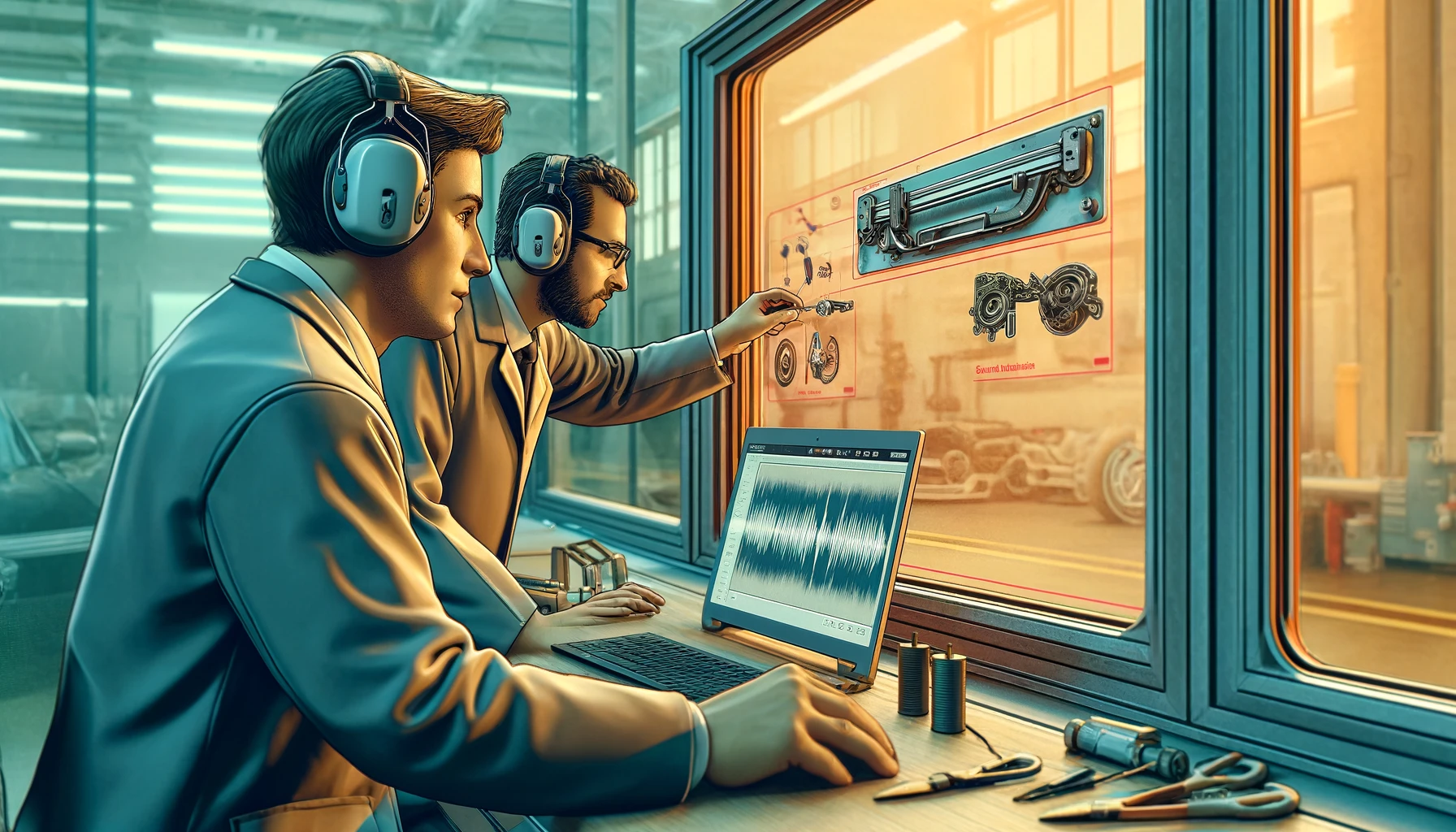Leveraging AI for Window Regulator Quality Control
A I • May 06,2024

A leading automotive manufacturer faced challenges with manual quality control of window regulators, which led to subjectivity, inefficiency, and high error rates. To address these issues, they implemented an AI-powered sound analysis system from Neuron Soundware. This solution enabled objective and consistent quality control, significantly reducing testing time and error rates.
Client:
The client is a top market leader in the automotive industry, producing mechanical control cables, window regulators, door modules, and power closure products.
With facilities in many countries worldwide, the company is represented in all major automotive markets globally. The company annually manufactures over 10 million automotive cables and window regulators, maintaining its status as a leading market provider for recreational vehicle cable applications.
Problem Statement:
The old way of checking window regulators was unreliable. Operators listened to each one, but this led to inconsistent results (subjectivity) and was very time-consuming (inefficiency). Since it relied on human judgment, many defective parts slipped through (high error rate). This is why the company needed a better solution.
Results:
☑️ Enhanced objectivity and consistency: Previously, human operators made quality control decisions up to 700 times per day. The AI system eliminates the need for these subjective human decisions.
☑️ Increased efficiency: The AI can evaluate window regulators much faster than humans, leading to reduced testing time and increased production line throughput. 1600 products tested daily.
☑️ Reduced error rate: Thanks to the AI’s ability to analyze large volumes of sound data and identify subtle defects that might go unnoticed by the human ear, the number of defective parts passing through quality control has been significantly reduced.
☑️ Improved customer satisfaction: With the decrease in defective products, there have been fewer returns and complaints from customers, resulting in an improved overall customer satisfaction with the company’s products.
AI Solution:
Seeking a solution to eliminate the issues of subjectivity, inefficiency, and high error rates associated with manual quality control of window regulators, the company implemented an AI (artificial intelligence) system based on sound analysis.
The Neuron Soundware (NSW) AI system was deployed on the window regulator production line. This system utilizes IoT devices to capture sound data during window regulator testing, and then employs a machine learning algorithm to classify the sound and determine its adherence to quality standards.
Implementation of the Neuron Soundware AI system:
● Sound Data Collection: NSW IoT devices record the sounds emitted by the window regulator during operation.
● Sound Analysis: The NSW machine learning algorithm analyzes the recorded sounds, evaluating them based on various parameters, including frequency, volume, and noise.
● Classification: Based on the sound analysis, the NSW system classifies each window regulator as either passing or failing the quality control test.
● Result Visualization: The NSW system visualizes the test results on a screen, clearly indicating to the operator whether the window regulator meets quality standards.
● Data Storage: Sound data and test results are stored in the cloud, enabling the company to conduct data analysis, identify trends and potential issues, and provide clear product quality verification to customers.
NSW in Action:
Neuron Soundware Demonstration
References:
1. Testing Output Quality of Electric Window Controls for Cars
Industry: Automotive
Vendor: Neuron Soundware
Client: Automotive company
Keywords: AI in quality control, Sound analysis, Defect detection with AI, Predictive maintenance with AI, AI for manufacturing optimization
Previos Article Ensuring Medical Device Safety with AI-Powered Vision
Next Article AI-powered Quality Control for Missile Interceptor Systems